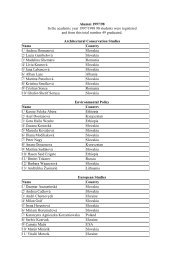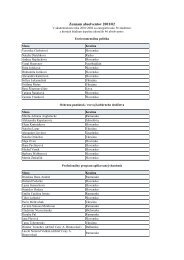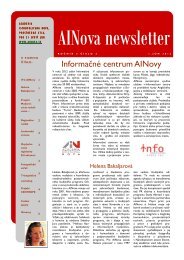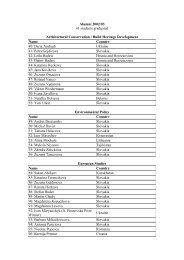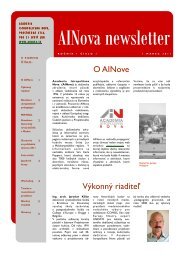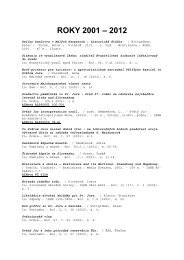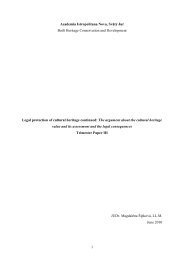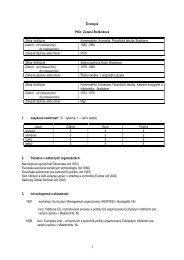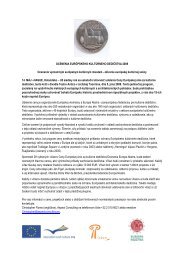modern movement modern movement conservations lessons learned
modern movement modern movement conservations lessons learned
modern movement modern movement conservations lessons learned
You also want an ePaper? Increase the reach of your titles
YUMPU automatically turns print PDFs into web optimized ePapers that Google loves.
Mrs. Tugendhat 15 recalled in admiration: “He himself (Mies van der Rohe)designed every item, down to the door handles.” 16The respect for original material has one big problem in the case of <strong>modern</strong><strong>movement</strong> buildings; the materials applied are often in a bad condition simplybecause they are used in a wrong way. If we would respect the original material,in the same place, we make the same mistake as the designers did. Within yearsthe same problems will occur and time and money will be wasted. New materialsare now available with the same aesthetic appearance as the originals. Thesenew materials have qualities that make them more suitable than the originals.Replacing the original materials has become an option. Alan Baxter believes inthe ‘intellectual achievement’ of the <strong>modern</strong> <strong>movement</strong> so he sees no dilemmain the replacement of material: ‘When the materials are in difficulty, if it iseconomic, replace them with better-detailed materials without any philosophicalqualms, but with good design and skill.’ 17Should wrong materials be kept in their place or is it allowed to replace themwith (new) better materials? It is true that architects of the <strong>modern</strong> <strong>movement</strong>lacked certain knowledge and experience. But there were reasons why they usedthese materials and techniques. We should find these reasons and try tounderstand them, so that we are able to decide whether to replace or maintainthese failing elements. ‘The innovations and experiments of the <strong>modern</strong> engineerand architect represent a historic value of their own, even if they may have failed. ’ 18The Nara document provides this solution. In the Nara document, we see thatrespect for authenticity has become even more important than in the Venicecharter. The wise addition to the concept of authenticity in the Nara documentwas that it was placed in the context of the culture. ‘All judgements about valuesattributed to cultural properties as well as the credibility of related informationsources may differ from culture to culture, and even within the same culture. It isthus not possible to base judgements of values and authenticity within fixedcriteria. On the contrary, the respect due to all cultures requires that heritageproperties must be considered and judged within the cultural contexts to whichthey belong.’This means that every culture or society can have its own judgment aboutauthenticity.Modern <strong>movement</strong> buildings have their specific technical problems. But theirform, function and concept are as important as their materialisation. In case thisopinion becomes leading for <strong>modern</strong> <strong>movement</strong> buildings, the solution is foundwithin the framework of the documents. Alan Baxter puts it like this: Thereshould be a switch from tangible, material issues to more abstract issues ofintellectual achievements, social values and long-term sustainability. 19A possible solution would be an annex to one of the documents, which statesthat in some cases the form of an object is as important as the materialisation.15 Mrs. Greta Tugendhat and her husband, Mr. Fritz Tugendhat were the investors of theTugendhat villa in Brno, Czech Republic, built 1928-1930 by German architect Ludwig Miesvan der Rohe. Since 2001 the villa is inscribed in the World Heritage list.16 Kudĕlka, Z.; Teplý, L. Villa Tugendhat. Fotep, Brno, Czech Republic, 2001, page 22 .17 Baxter, A. Twentieth-Century Buildings. in: Journal of Architectural Conservation. No. 2, Volume 7,July 2001, page 29.18 Jonge, W. Three <strong>modern</strong> preservation cases. The restoration of Rietveld's Biennale Pavilion(1953-54) in Venice, Italy, compared to Sanatorium “Zonnestraal” (Jan Duiker, 1926-28) andthe Van Nelle Factories (Brinkman&Van der Vlugt, 1926-31). Text published as a chapter inthe RAIA Sisalation Publication, Sydney, Australia, 2004.19 Baxter, op. cit. page 30.MODERN MOVEMENT CONSERVATION - LESSONS LEARNED12



